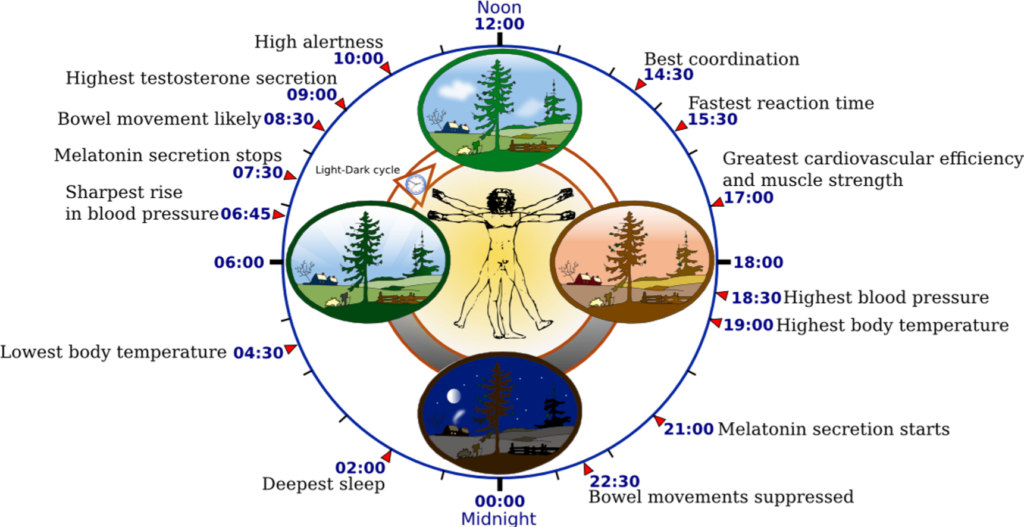Lab 1: Homeostasis, Data Collection and Data Analysis

Abstract: One of the primary functions of human physiology is to maintain homeostasis of the body’s internal environment. Almost every measurable variable within the human body is maintained within a healthy homeostatic range, despite the fact that the external environment is highly variable. Examples of such variables include cardiac output, blood pressure, body temperature, blood glucose concentration, blood pH, and many others. Many of the measurable variables within the human body fluctuate cyclically over a 24-hour period. These patterns are called circadian rhythms and include cyclical changes in core body temperature, melatonin levels, testosterone levels, blood pressure, coordination, reaction time, and alertness. Disruptions of circadian rhythms can impact human health and have been implicated in homeostatic disturbances and disorders, such as seasonal affective disorder (SAD), insomnia, and jet lag. Data collection and analysis are very important processes in the study of physiology. We will use the concepts of homeostasis and circadian rhythms to introduce some important techniques in data collection and analysis. These techniques include graphing, differentiating between correlation and causation, and ensuring that logical fallacies do not occur.
